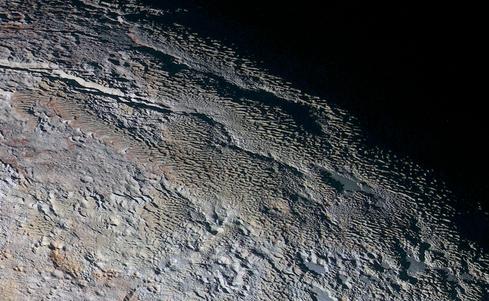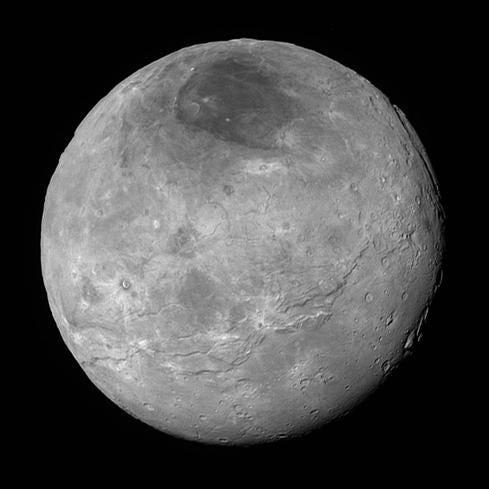NASA's New Horizon Reveals Pluto's Snakeskin Surface
The New Horizons mission to Pluto continues to amaze, as new images reveal a complex system of geography and chemical composition.


NASA's New Horizons Transmits New Pluto, Charon Images
NASA's New Horizons Transmits New Pluto, Charon Images (Click image for larger view and slideshow.)
Photos from NASA's New Horizons voyage to the outermost planet (or dwarf planet, depending on where you stand) in the Solar System continue to deliver mesmerizing and complex images of the far-flung celestial body.
The latest images of Pluto's surface show a multitude of previously unseen topographic and compositional details, including a vast rippling landscape of peculiar, aligned linear crests that have taken New Horizons team members by surprise.
"It's a unique and perplexing landscape stretching over hundreds of miles," William McKinnon, New Horizons Geology, Geophysics and Imaging (GGI) team deputy lead from Washington University in St. Louis, said in a Sept. 24 statement. "It looks more like tree bark or dragon scales than geology. This'll really take time to figure out; maybe it's some combination of internal tectonic forces and ice sublimation driven by Pluto's faint sunlight."
The NASA spacecraft also captured the highest-resolution color view yet of Pluto, as well as detailed spectral maps and other high-resolution images, which just represent a small handful of the tantalizing pieces of data New Horizons sent back in recent days.
The spacecraft's wide-angle Ralph/Multispectral Visual Imaging Camera (MVIC) sent back images showing the extraordinarily rich color palette of Pluto.
"We used MVIC's infrared channel to extend our spectral view of Pluto,” John Spencer, a GGI deputy lead from Southwest Research Institute (SwRI) in Boulder, Colorado, wrote. "Pluto's surface colors were enhanced in this view to reveal subtle details in a rainbow of pale blues, yellows, oranges, and deep reds. Many landforms have their own distinct colors, telling a wonderfully complex geological and climatological story that we have only just begun to decode."
Scientists aren't sure if the distribution of methane across the surface is because the gas is more likely to condense there or that its condensation brightens those regions.
The spacecraft's instruments found higher concentrations on bright plains and crater rims, but very few in the centers of craters or darker regions.
[See the first images of Pluto from New Horizons.]
New Horizons launched on Jan. 19, 2006 on a mission to help NASA understand where Pluto and its moons fit in with the other objects in the Solar System. Its yearlong download of new images and other data began over the Labor Day weekend earlier this month.
Beyond the new images, new compositional information also arrived from a new map of methane ice across part of Pluto's surface that reveals striking contrasts.
Adding to the complexity, analysis of the Sputnik Planum indicated abundant levels of methane, while the region the Cthulhu Regio shows none, aside from a few isolated ridges and crater rims.
Analysis found the mountains that flank the west side of Sputnik lack methane as well.
"It's like the classic chicken-or-egg problem," Will Grundy, New Horizons surface composition team lead from Lowell Observatory in Flagstaff, Arizona, said in a statement. "We're unsure why this is so, but the cool thing is that New Horizons has the ability to make exquisite compositional maps across the surface of Pluto, and that'll be crucial to resolving how enigmatic Pluto works."
About the Author(s)
You May Also Like







